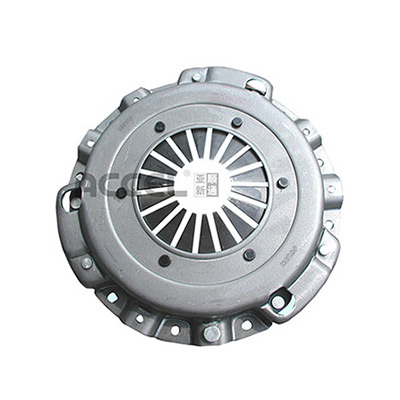- Arabic
- French
- Russian
- Spanish
- Portuguese
- Turkish
- Armenian
- English
- Albanian
- Amharic
- Azerbaijani
- Basque
- Belarusian
- Bengali
- Bosnian
- Bulgarian
- Catalan
- Cebuano
- Corsican
- Croatian
- Czech
- Danish
- Dutch
- Afrikaans
- Esperanto
- Estonian
- Finnish
- Frisian
- Galician
- Georgian
- German
- Greek
- Gujarati
- Haitian Creole
- hausa
- hawaiian
- Hebrew
- Hindi
- Miao
- Hungarian
- Icelandic
- igbo
- Indonesian
- irish
- Italian
- Japanese
- Javanese
- Kannada
- kazakh
- Khmer
- Rwandese
- Korean
- Kurdish
- Kyrgyz
- Lao
- Latin
- Latvian
- Lithuanian
- Luxembourgish
- Macedonian
- Malgashi
- Malay
- Malayalam
- Maltese
- Maori
- Marathi
- Mongolian
- Myanmar
- Nepali
- Norwegian
- Norwegian
- Occitan
- Pashto
- Persian
- Polish
- Punjabi
- Romanian
- Samoan
- Scottish Gaelic
- Serbian
- Sesotho
- Shona
- Sindhi
- Sinhala
- Slovak
- Slovenian
- Somali
- Sundanese
- Swahili
- Swedish
- Tagalog
- Tajik
- Tamil
- Tatar
- Telugu
- Thai
- Turkmen
- Ukrainian
- Urdu
- Uighur
- Uzbek
- Vietnamese
- Welsh
- Bantu
- Yiddish
- Yoruba
- Zulu
ágú . 19, 2024 13:11 Back to list
Timing Belt Maintenance and Common Questions Answered for Car Owners
Timing Belt FAQ Everything You Need to Know
A timing belt is an essential component in many vehicles, playing a critical role in synchronizing the rotation of the crankshaft and camshaft. This synchronization ensures that the engine’s valves open and close at the correct times during each cylinder's intake and exhaust strokes, allowing for efficient engine performance. In this article, we will address some frequently asked questions about timing belts to help you understand their importance and maintenance.
1. What is a Timing Belt?
A timing belt is a toothed belt made of rubber and reinforced with fibers. It is responsible for controlling the timing of the engine’s internal components, specifically the crankshaft and camshaft. The precise synchronization provided by the timing belt allows for optimal combustion and engine efficiency.
2. When Should I Replace My Timing Belt?
Timing belts typically need to be replaced every 60,000 to 100,000 miles, but this can vary depending on the manufacturer. Always refer to your vehicle’s owner manual for specific recommendations. Regular inspections are essential since a worn or damaged timing belt can lead to severe engine damage if it fails.
3. What Are the Signs of a Failing Timing Belt?
If your timing belt is nearing the end of its life, you may notice several symptoms, including
- Loud Noise A high-pitched squeaking or ticking sound may indicate loose timing belt components. - Engine Misfires If the camshaft is out of time, the engine may misfire or run roughly. - Oil Leaks Leaking oil around the front of the motor may signal a worn timing belt cover. - Warning Lights Dashboard warning lights related to the engine should not be ignored.
timing belt faq

If you experience these symptoms, it’s crucial to have your vehicle inspected by a professional mechanic.
4. What Happens If a Timing Belt Fails?
A timing belt failure can lead to catastrophic engine damage, especially in interference engines where the pistons and valves occupy the same space. If the belt snaps while the engine is running, the pistons may collide with the open valves, resulting in bent rods, damaged camshafts, and severe repair costs. This is why regular maintenance and prompt replacement of a worn timing belt are vital.
5. Do All Vehicles Have Timing Belts?
While many vehicles come equipped with timing belts, some use timing chains instead. Timing chains are generally more durable and can last the lifetime of the engine without needing replacement. However, they can also stretch over time and may require occasional maintenance. Again, it's essential to consult your owner’s manual to determine whether your car has a timing belt or a chain.
6. How Can I Extend the Life of My Timing Belt?
To prolong the life of your timing belt, consider these tips
- Follow Maintenance Schedule Adhere to the manufacturer’s recommendations for timing belt replacement. - Regular Inspections Have your timing belt inspected regularly, especially if your vehicle is nearing the replacement interval. - Avoid Overheating Excessive engine heat can accelerate timing belt wear. Ensure your cooling system functions correctly.
In conclusion, understanding the function and maintenance of your vehicle's timing belt is crucial for its longevity and performance. Regular check-ups and timely replacement can prevent costly repairs and keep your engine running smoothly. If you have further questions about your timing belt or the specific requirements for your vehicle, consider consulting a qualified mechanic. Remember, it’s always better to be proactive than reactive when it comes to engine maintenance!
-
Korean Auto Parts Timing Belt 24312-37500 For Hyundai/Kia
NewsMar.07,2025
-
7PK2300 90916-T2024 RIBBED BELT POLY V BELT PK BELT
NewsMar.07,2025
-
Chinese Auto Belt Factory 310-2M-22 For BMW/Mercedes-Benz
NewsMar.07,2025
-
Chinese Auto Belt Factory 310-2M-22 For BMW/Mercedes-Benz
NewsMar.07,2025
-
90916-02660 PK Belt 6PK1680 For Toyota
NewsMar.07,2025
-
drive belt serpentine belt
NewsMar.07,2025

